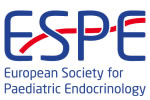hrp0094p2-416 | Sex differentiation, gonads and gynaecology or sex endocrinology | ESPE2021
Ovarian Juvenile Granulosa Cell Tumor in 9-Month-Old female Infant presented with Isosexual Pseudo Puberty: Case Report
Ahmed Shayma , Soliman Ashraf , Alaaraj Nada , Alyafie Fawzia , Maadheed Maryam AL , Clelland Colin
hrp0094p2-243 | Fetal, neonatal endocrinology and metabolism (to include hypoglycaemia) | ESPE2021
Postnatal linear growth and weight gain in infants of non-diabetic mothers (INDM) who were born preterm or near term and had significant neonatal hypoglycemia.
Alaaraj Nada , Soliman Ashraf , Ahmed Shayma , Hamed Noor , Itani Maya , Al-Naimi Fatima ,
hrp0094p2-244 | Fetal, neonatal endocrinology and metabolism (to include hypoglycaemia) | ESPE2021
Genetic Testing Access and Results for Patients with Congenital Hyperinsulinism as Conducted through the CHI and University of Exeter Partnership
Pasquini Tai L.S. , Houghton Jayne A.L. , Mesfin Mahlet , Flanagan Sarah E. , Raskin Julie ,
hrp0097fc3.4 | Fat, metabolism and obesity 1 | ESPE2023
A Novel Mutation in DYRK1B Associated With Abdominal Obesity Metabolic Syndrome 3 (AOMS3)
Faisal Mohamadsalih Ghassan , Al-Barazenji Tara , Omar Mohammed Idris , Nedham A J Alshafai Mashael , Hussain Khalid
hrp0097t4 | Section | ESPE2023
Functional characterization of novel MC4R gene variant in two unrelated patients with morbid obesity
Mohammed Idris , Selvaraj Senthil , Ahmed Wesam , Albarazenji Tara , Al-Shafai Mashae , Hussain Khalid
hrp0097p1-196 | Thyroid | ESPE2023
Clinical Pattern and management attitudes of Paediatric Graves' Disease in Saudi Arabia, A 10-Year Experience
Mulla Jaazeel , Al Shaikh Adnan , Aldubayee Mohammad , AlNoaim Khalid , Hakim S , Babiker Amir
hrp0097p2-175 | Bone, Growth Plate and Mineral Metabolism | ESPE2023
Kenny Caffey Syndrome; a Rare Diagnosis in Saudi Arabia.
Alzahrani Hajer , Babikr Amir , Alghamdi Omair , Almutairi Fuad , Al Alwan Ibrahim
hrp0097p2-260 | Late Breaking | ESPE2023
Pseudohypoaldosteronism: a challenging diagnosis with management pitfalls
Babiker Amir , Aldabas Haya , Alanazi Shahad , Alahmadi Bashayer , Al Atawi Mohsen , Aljuraibah Fahad , Almutair Angham
hrp0082p3-d1-874 | Perinatal and Neonatal Endocrinology | ESPE2014
Clinical Characteristics and Phenotype–Genotype Analysis in Turkish Patients with Congenital Hyperinsulinism; Predominance of Recessive KATP Channel Mutations
Demirbilek Huseyin , Arya Ved Bhushan , Ozbek Mehmet Nuri , Akinci Aysehan , Dogan Murat , Demirel Fatma , Houghton Jayne , Kaba Sultan , Guzel Fatma , Baran Riza Taner , Unal Sema , Tekkes Selahattin , Flanagan Sarah E , Ellard Sian , Husssain Khalid
hrp0092p2-193 | Growth and Syndromes (to include Turner Syndrome) | ESPE2019
Linear Growth of Children with Celiac Disease (CD) after the First Two Years on a Gluten-Free Diet (GFD); A Controlled Study
TAWFIK SOLIMAN ASHRAF , Laham Muhannad , Jour Celine , Itani Maya , Shaat Mona , Souikey Fatima , Al-Naimi Noora , Al-Safi Athba , Qudaisat Anwar , Alarabi Zohair , Hassan Ayman , Quraan Eyad , Elsiddig sohair



